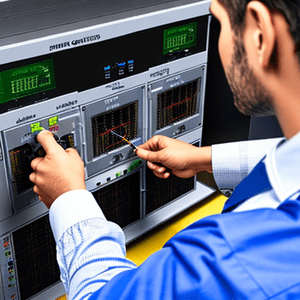How to Conduct a Power Quality Analysis in Taiwan?
Power quality is the equipment’s aptitude to utilize the energy supplied. Power quality issues result in excessive energy consumption and bills, high maintenance costs, direct economic repercussions, output loss, unrecoverable downtime and resources, and equipment instability and failure. Energy management must be examined by all organizations, and power quality must be evaluated as part of any energy management program. CareLabs provides several services that address a variety of energy-related issues. We offer research and analysis on power quality based on our expertise in this area.
Quality Issues with Electricity:
Power supply quality is a more complex and nuanced indicator than reliability. It is not a problem of supply availability, but rather of the electrical supply’s suitability and compatibility.
Variations in power quality may be divided into two categories:
Disruptions:
Disruptions take place when there are abnormalities in the voltage or current. Transient voltages can be recognized when the peak magnitude exceeds a predetermined threshold. Voltage fluctuations like as dips, surges, and interruptions can be distinguished when the RMS variation exceeds a predetermined threshold.
Changes to the steady state:
Examples of steady-state fluctuations include changes in RMS voltage and harmonic wave distortion. Voltage and current must be monitored throughout time to provide a representative sample of these variations. This sampled data is most easily displayed as a voltage distortion over time, and is afterwards analyzed using approaches such as the average distortion level, which is 95% unlikely to be exceeded, etc.
Table of Contents

One of the elements affecting supplier quality is:
- Stability of voltage
- Supply frequency
- Voltage drops
- Voltage surges
- Transient voltages
- Harmonic aberrations are variables that influence the quality of the supply.
- Radiofrequency estimation
Many of these components are difficult to identify and see. Typically, its assessment must be undertaken by trained technicians or engineers using specialized testing equipment.
Voltage Constant:
The electrical system’s steady-state voltage levels change continuously in response to load and other system events. In general, as load grows, voltage levels tend to drop. Similarly, when a load is removed, voltage levels climb.
Unbalanced Voltage Range:
Variation of the three-phase supply value or phase angle displacement. Unbalanced circuit impedances and unbalanced loads can also cause it. It causes heat effects, equipment failure, and loss of productivity.

Variations in Voltage:
Voltage sags are transient dips in the RMS supply voltage between 0.5 cycles and one minute in duration. Voltage surges are transient spikes in the RMS supply voltage that exceed a threshold limit between 0.5 cycles and one minute.
Distribution Frequency:
The frequency of the supply voltage wave is referred to as the supply frequency. NEMMCO, the National Electricity Market Management Company, establishes the frequency standards for the National Electricity Market. Outside of the National Electricity Market, frequency standards are determined by the local generating authority.
Harmonics Deformation:
It is a periodic and persistent distortion of the voltage or current waveform at the source. Excessive harmonics may result in additional losses, flickering light, malfunctions, radio interference, motor vibrations, and inefficient functioning of sensitive equipment.



The Following Is How CareLabs Analyzes Power Quality:
- The purpose of the power quality survey and the evaluation on-site are indicated.
- Continue your inquiry by drawing a one-line diagram of the whole electrical system.
- A power analyzer is linked at various places in the distribution end to collect data from each individual system.
- Maintaining the distribution network shown in the single-line diagram.
- Examining and analyzing collected data, as well as doing additional analysis
- Submission of a report and solution recommendation
Our team of highly trained professionals can help you with power quality issues. A thorough system research and analysis ensures that your power quality is of the highest standard. Contact us for further details about our power quality analysis service!
RELATED NEWS








Coordination


RELATED NEWS











